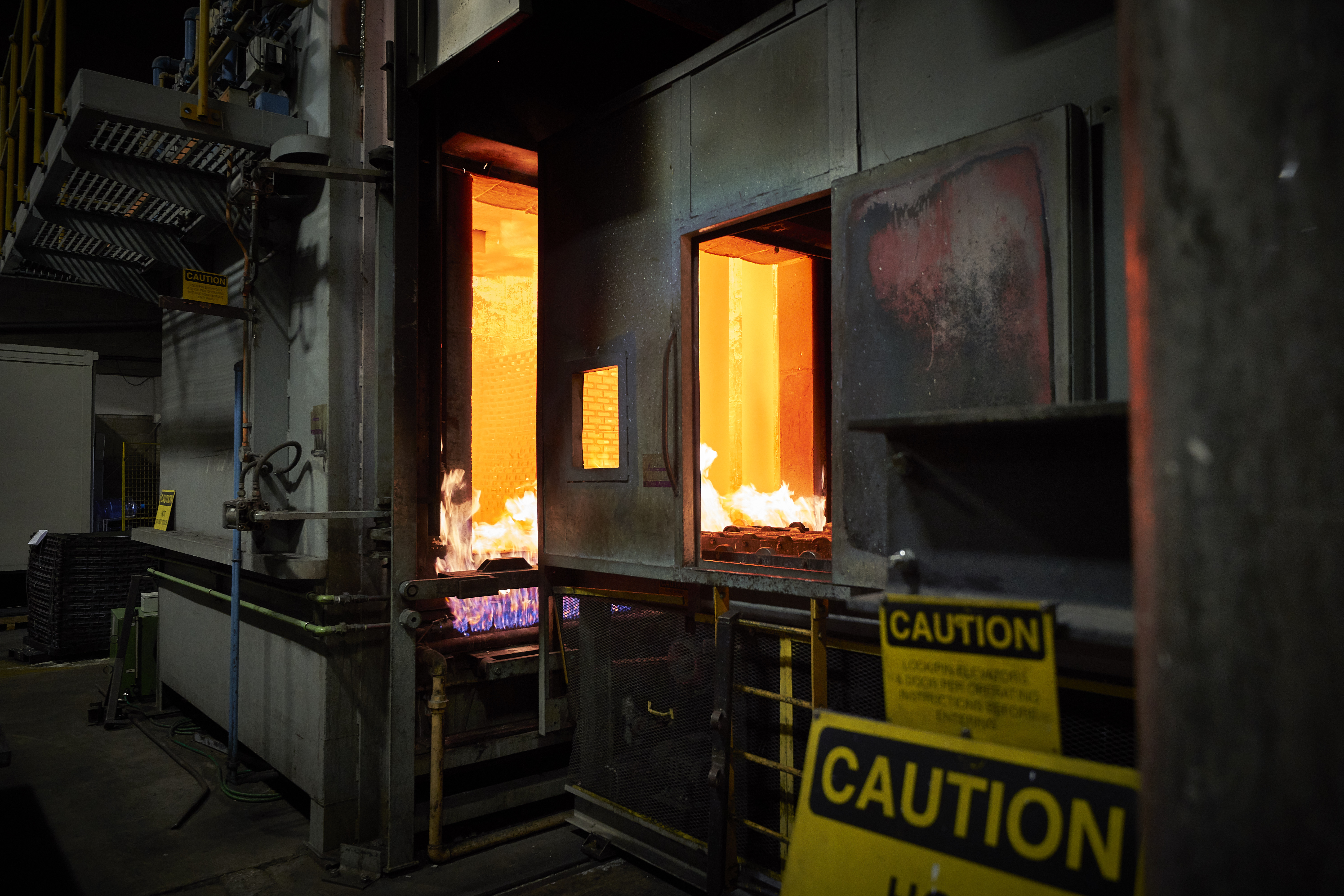ADI is a most versatile material, enabling innovative solutions to new and current problems.
By selecting precise heat treatment parameters a specific set of properties can be achieved. The lower hardness ADI castings are used in structural applications, often where weight and cost reduction are important.
Wear resistance is superior to steel at any given hardness level, making the higher hardness grades ideal for mining, construction, agricultural and similar high abrasion applications.
ADI competes favourably with steel components, especially for heavy-duty parts where reliability is paramount.
It is used to upgrade from standard ductile irons, and as a substitute for manganese steel and nickel-hard materials.
When strength is required ADI is particularly cost-effective: tensile and yield values are twice those of standard ductile iron; fatigue strength is 50% higher and it can be enhanced by shot peening or fillet rolling.
With its high strength-to-weight ratio ADI can even replace aluminium when reduced section sizes are acceptable.
Because the carbon rich austenite phase is stable in Austempered Ductile Iron it enhances the bulk properties.

Furthermore, while the austenite is thermodynamically stable, it can undergo a strain-induced transformation when locally stressed, producing islands of hard martensite that enhance wear properties.
This behaviour contrasts with that of the metastable austenite retained in steels, which can transform to brittle martensite.
All heat treatments create dimensional change but with ADI this effect can be minimised. The process is isothermal which means that components of the same incoming chemistry will grow the same way every time.
Batch-to-batch and part-to-part, your components will have predictable growth from the Austempering process. That means you can design the dimensional change into your component and let it grow to its tolerance.
The final properties (grades) of the ADI are governed by the austempering temperature and duration.
The Standard Grades of ADI are shown below.
| ISO 17804 | |||||
| Symbolic Definition | ISO17804-2005 |
Tensile Strength Rm(N/mm2 Min) |
0.2% Proof Strength Rp 0.2(N/mm2 Min) |
Elongationan A5(%Min) Lo=5XD |
Brinell Hardness |
| ADI 800 | ISO17804/JS/800-10 | 800 | 500 | 10 | 250-310 |
| ADI 900 | ISO 17804/JS/900-8 | 900 | 600 | 8 | 280-340 |
| ADI 1050 | ISO17804/JS/1050-6 | 1050 | 700 | 6 | 320-380 |
| ADI 1200 | ISO17804/JS/1200-3 | 1200 | 850 | 3 | 340-420 |
| ADI 1400 | ISO17804/JS/1400-1 | 1400 | 1100 | 1 | 380-480 |
| ADI 1400 | ISO17804/JS/HBW400 | 1400 | 1100 | 1 | Min.400 |
| ADI 1600 | ISO17804/JS/HBW450 | 1600 | 1300 | - | Min.450 |
| EN 1564 | |||||
|
Conventional Name |
UNI EN1564 |
TensileStrength Rm (N/mm2 Min) |
0.2% ProofStress Rp 0.2 (N/mm2 Min) |
Elongation A5 (%Min) Lo=5XD |
Brinell Hardness |
| ADI 800 | EN-GJS-800-10 | 800 | 500 | 10 | 250-310 |
| ADI 900 | EN-GJS-900-8 | 900 | 600 | 8 | 280-340 |
| ADI 1050 | EN-GJS-1050-6 | 1050 | 700 | 6 | 320-380 |
| ADI 1200 | EN-GJS-1200-3 | 1200 | 850 | 3 | 340-420 |
| ADI 1400 | EN-GJS-1400-1 | 1400 | 1100 | 1 | 380-480 |
| ADI 1400 | EN-GJS-HB400 | 1400 | 1100 | 1 | Min 400 |
| ADI 1600 | EN-GJS-HB450 | 1600 | 1300 | - | Min 450 |
| ASTM A897M | |||||
|
Conventional Name |
ASTM A897M |
TensileStrength Rm (N/mm2 Min) |
0.2% ProofStress Rp 0.2 (N/mm2 Min) |
Elongation A5 (% Min) Lo =5XD |
Brinell Hardness |
| ADI 900 | 900-650-09 | 900 | 650 | 9 | 269-341 |
| ADI 1050 | 1050-750-07 | 1050 | 750 | 7 | 302-375 |
| ADI 1200 | 1200-850-04 | 1200 | 850 | 4 | 341-444 |
| ADI 1400 | 1400-1100-02 | 1400 | 1100 | 2 | 388-477 |
| ADI 1600 | 1600-1300-01 | 1600 | 1300 | 1 | 402-512 |
|
ASTM A897M (Mixed Microstructure) |
|||||
|
Conventional Name |
ASTM A897M |
TensileStrength Rm (N/mm2 Min) |
0.2% ProofStress Rp 0.2 (N/mm2 Min) |
Elongation A5 (% Min) Lo=5XD |
Brinell Hardness |
| ADI 750 | 750-500-11 | 750 | 500 | 11 | 241-302 |
There are no standard grades for AGI or CADI